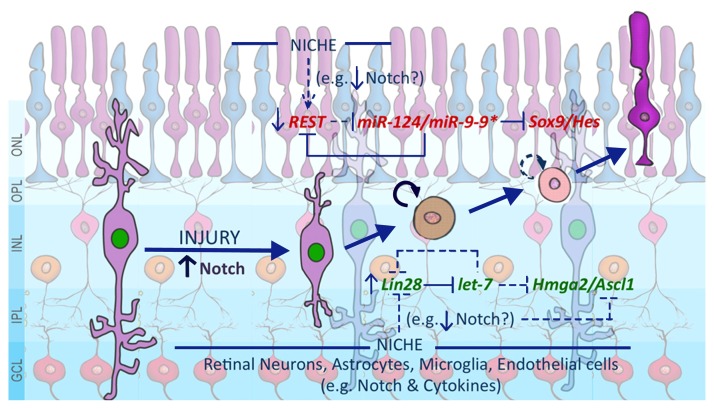Fig. 1.
A schematic representation of mechanisms underlying the neurogenic potential of MG. A subset of MG, most likely those with dormant stem cell properties, respond to injury by proliferating presumably under Notch signaling influence. As the activated MG migrate out of the INL, the changing niche, presumably reflected in altered Notch/cytokine signaling, influence them to engage both the excitatory (Green) and inhibitory (Red) axes regulating the neurogenic potential. It is possible that the imbalance between the two axes and their inadequate niche-based recruitment prevents mammalian MG from regenerating retinal neurons. The niche could be composed of retinal neurons, immigrant astrocytes, microglia, and endothelial cells. The niche-based communication for regeneration may involve diverse signaling pathways, exemplified by Notch and cytokine signaling, acting in concert. Notch signaling besides influencing these two molecular axes, may directly influence the expression of proneural genes. ONL: outer nuclear layer, OPL: outer plexiform layer, INL: inner nuclear layer, IPL: inner plexiform layer, GCL: ganglion cell layer.

